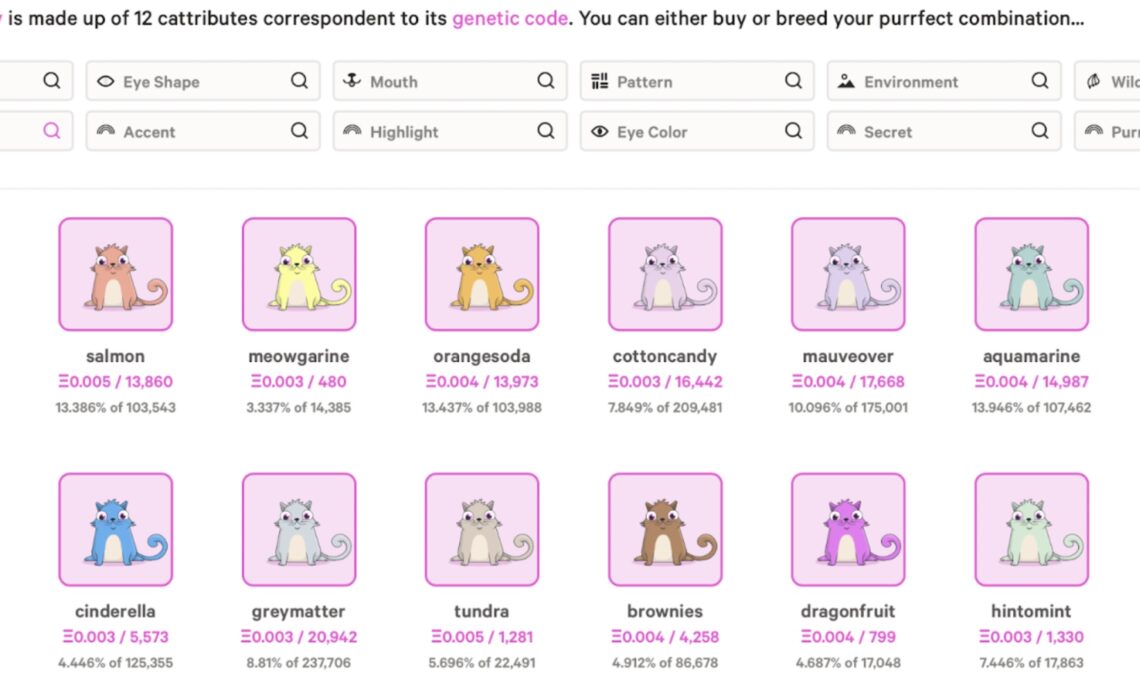Over the last year, venture capitalists poured more than $4.6 billion into infrastructure and projects related to nonfungible tokens (NFTs). This infrastructure now needs users. They will come when people understand that they can apply these NFTs not just for speculative purposes but to design and structure their everyday activities. For these, they don’t need NFTs — they need to sort their lives out. And, decentralized catalogs are there to help them do it.
We can think about an NFT as a book someone owns, and this ownership is recorded on the blockchain. But what we’re actually missing is the library.
Not just a flower, but a garden
Multiple NFTs making up a collection form a system. This system has a structure through the standards it uses. If you’ve ever visited CryptoKitties, you’ve probably noticed the museum-like categorization of the Kitties and their attributes in their “catalog.”
However, each item in the collection means nothing without the collection itself. You can’t take a CryptoKitty out of the original smart contract. You can copy the image or create a fractional version of it, but you will not be able to transfer its value if the derivative version of your CryptoKitty isn’t linked to the original collection. This means that the value of each NFT is not determined by a stand-alone item in the collection but by the collection itself.
In simple words, if we take a step back from each item in almost any NFT collection, we’ll discover that the actual value is not in a single NFT itself but in a perfect system of multiple NFTs bound together by one smart contract. By doing this, we stop staring at a single flower and realize we are in a well-designed garden.
Related: Throw your Bored Apes in the trash
When applying all the standardization approaches and structuring all the data properly, we are creating systematic lists of items publicly stored on the blockchain — decentralized catalogs.
How decentralized cataloging can add new value
Everyone has heard of Guinness World Records, Michelin Guide or IUCN Red List. In a nutshell, they are all extremely valuable catalogs. Behind each of them is a managing authority that invests its brand and expertise in bringing value to every new iteration of the catalog. Even if the rules of adding new items to centralized lists are not transparent or even questioned, this approach is sustainable.
However, the biggest problem these catalogs present is an extremely high…
Click Here to Read the Full Original Article at Cointelegraph.com News…
























